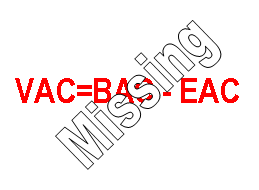 Yesterday, I was having coffee with Jesse Fewell and we discussed, among other topics, how the PMP® or Certified ScrumMaster (CSM) credentials legitimize many in the eyes of stakeholders. This is a sore spot for many, particularly for me. Experience and project leadership trumps a certification any day of the week. But, for those of us who believe we know what we're talking about, a credential is sometimes a necessary evil. As I advise a Federal PMO on a multi-year project, I have grown to accept that progress can be slow and expensive. Things can be so slow and expensive, we rarely get to see actual value delivered. Rather, successes are measured with earned value. Sometimes, I think it's just the nature of the beast. But, it doesn't have to be that way.
Yesterday, I was having coffee with Jesse Fewell and we discussed, among other topics, how the PMP® or Certified ScrumMaster (CSM) credentials legitimize many in the eyes of stakeholders. This is a sore spot for many, particularly for me. Experience and project leadership trumps a certification any day of the week. But, for those of us who believe we know what we're talking about, a credential is sometimes a necessary evil. As I advise a Federal PMO on a multi-year project, I have grown to accept that progress can be slow and expensive. Things can be so slow and expensive, we rarely get to see actual value delivered. Rather, successes are measured with earned value. Sometimes, I think it's just the nature of the beast. But, it doesn't have to be that way.
You can only imagine my excitement when a vendor proposed using Agile to deliver the next (year) software increment. The PMO I advise has many PMPs but only one CSM...me. I'm not going to go into the details of the project. But, how could the opportunity be seized to leverage Agile? Rather than answer that directly, I'll ask a question. If you believe in the Agile Manifesto, how would you convince people with no experience with Agile or Scrum (but lots of experience with the PMBOK and Waterfall) that you know what you're talking about and that Agile is a viable option? I would propose that you make sure you can communicate with stakeholders in a language they understand. If you start using terms like Sprint, ScrumMaster, and Burndowns, when they understand contract periods of performance, project managers, and EVM reports, you may lose that essential stakeholder buy-in.
One of the first things I would recommend you say is "Agile is actually in the PMBOK". If your stakeholders are PMPs and they believe the dogma of the PMBOK, you'll have their attention. It's not called Agile but it is there. In Chapter 2 (Project Life Cycle and Organization) of the PMBOK, you'll read about Project Phases, specifically phase-to-phase relationships, and then even more specifically the iterative relationship.
...only one phase is planned at any given time and the planning for the next is carried out as work progresses on the current phase and deliverables. This approach is useful in largely undefined, uncertain, or rapidly changing environments such as research , but it can reduce the ability to provide long term planning. The scope is then managed by continuously delivering increments of the product and prioritizing requirements to minimize project risks and maximize product business value. It also can entail having all of the project team members (e.g. designers, developers, etc.) available throughout the project or, at a minimum, for two consecutive phases.
For the Agile pundits out there, does that sound a little familiar? For those who believe the gospel of the PMBOK, is it reasonable to believe Agile is an approach that can be considered? Agile is not a bunch of voodoo for the wild and undisciplined. It's an excellent opportunity to deliver value.


